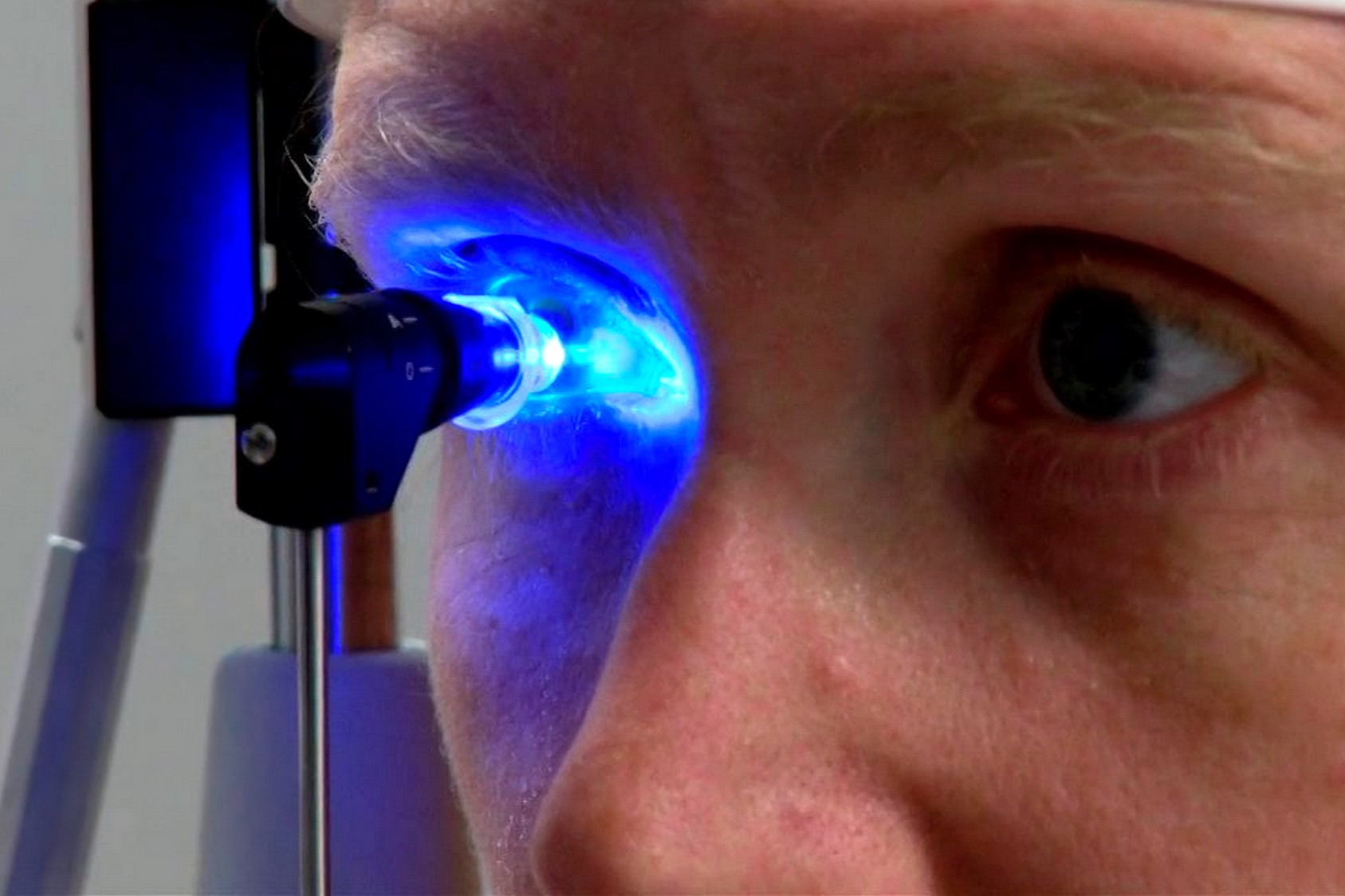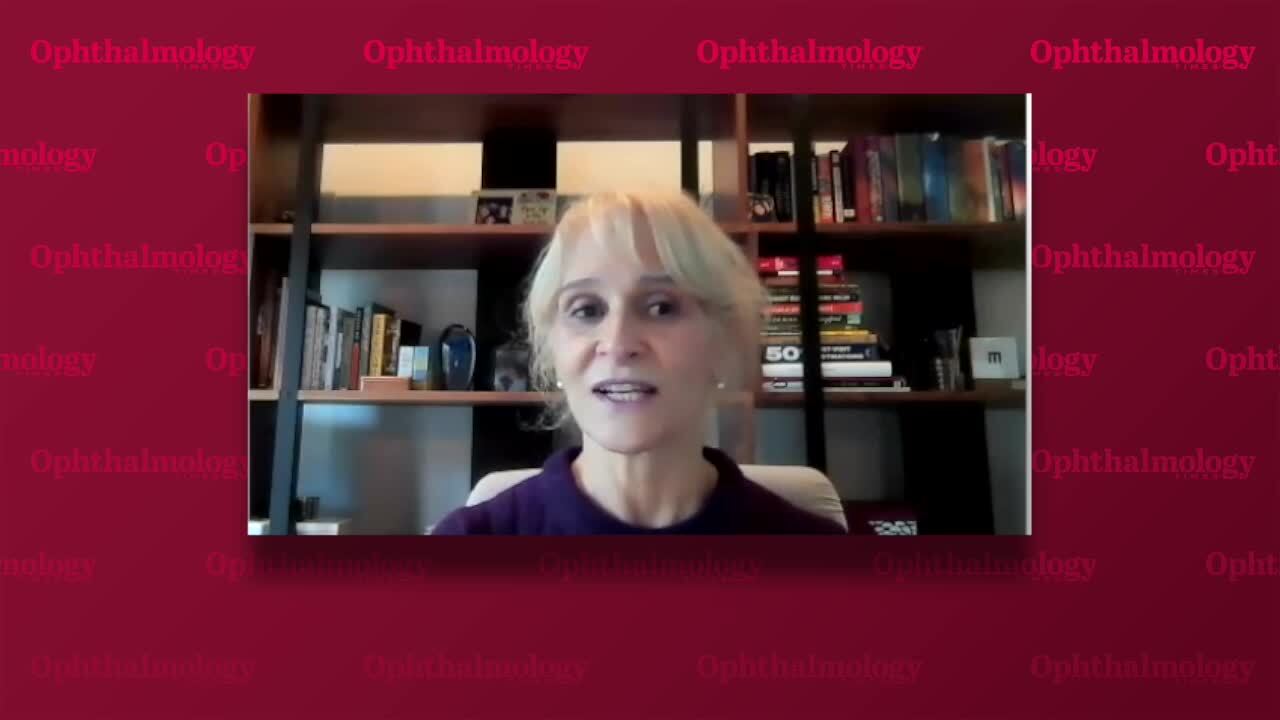
signs not to be underestimated
The mechanism that allows us to see what is around us is very complex: our sight, in fact, works thanks to the synergy between the eye and certain parts of the brain, which together provide us with visual information.
The light stimuli that hit the eyes, before reaching the retina, pass through the different transparent components that make up the eye (cornea, aqueous humour, crystalline lens and vitreous): a fundamental step to allow the brain to correctly interpret visual stimuli.
Taking care of our eyes is important, whether through a healthy lifestyle (which helps keep them healthy), regular eye examinations as a child, or by not underestimating any signs that indicate eye disorders.
Eyes: signs not to be underestimated
Even as a child, the eyes must be monitored through regular eye examinations.
Depending on each person’s age and needs, the ophthalmologist will provide the most appropriate indications.
However, there are certain signs that deserve attention and in their presence it is a good idea to consult the ophthalmologist.
Examples are:
A) Myodesopias or moving bodies:
Images of small corpuscles that appear to float in front of us within the visual field.
These are opacities of the vitreous body, the mass that fills the inside of the eye; when light passes through the vitreous body and encounters these thickenings, it casts shadows on the retina, disturbing vision.
They are also called ‘flying flies’ because they move and oscillate in our visual field when we shift our gaze.
They are related to an alteration of the vitreous body of the eye and can have several causes, from degeneration due to advancing age, to high myopia, to trauma, to dehydration.
They are a rather common phenomenon, however it is best not to underestimate them because they could also indicate a detachment of the vitreous from the retina and therefore deserve specialist investigation.
B) Red eyes, also known as conjunctival hyperemia:
These are a very common disorder caused by dilation of the blood vessels due to irritation or infection.
In most cases, the causes of red eyes are easily identifiable and the disorder resolves in a relatively short time; in other cases, the reddening of the eye may depend on injuries, trauma or foreign bodies present in the eye; more rarely, red eyes are associated with the presence of even serious pathologies such as an acute attack of glaucoma, uveitis, keratitis, scleritis.
In this case too, if the symptom persists it is a good idea to consult an ophthalmologist.
C) Excessive tearing:
In the presence of irritation or inflammation on the surface of the eye due to infection, allergies, foreign bodies or other substances, the eye produces more tears.
Excessive tearing can affect one or both eyes and can cause blurred vision, eyelid disorders and the formation of scaling of secretions.
D) Double vision (or diplopia):
When looking at an object one sees two images.
It can affect one eye only (monocular diplopia) and in this case it is usually due to irregularities of the corneal surface or problems with the cornea or retina or affect both eyes (binocular diplopia), the most common cause of which is strabismus, but can also be caused by neurological or muscular problems.
E) Pupils of different sizes (or anicosoria):
Pupils change size physiologically to regulate the amount of light entering the eye: in the dark they are larger, while if the light is bright they tend to constrict.
Dilation and constriction occur simultaneously for both pupils.
If, however, the pupils differ in size, this could indicate physiological anisocoria, or physical damage to the eye (trauma, infection) or the presence of iris or pupil disease.
F) Pain in the eye:
Alone or in association with other symptoms such as red eyes, tearing, swelling of the eyelids (swollen eye).
It could be attributable to eye diseases such as conjunctivitis, uveitis, glaucoma, allergies, but also (especially if it occurs alone) be related to other medical conditions (such as inflammation of the trigeminal nerve);
G) Visual impairment:
It can manifest itself in different ways: one can see less well, see shadows or see as if one had a curtain over the eye.
It may affect only one eye, both or even only part of the visual field.
Eyes: the most common disorders
Refractive defects: myopia, hypermetropia and astigmatism
By refractive defects we mean visual pathologies that prevent us from focusing on objects around us correctly and therefore require the use of prescription glasses or contact lenses.
Myopia, hypermetropia and astigmatism are refractive defects.
Myopia and refractive surgery
Myopia is a refractive defect that prevents distant objects from coming into focus.
This occurs because the image, instead of forming on the retina, forms in front of it.
Myopia can be mild from 0 to 3 dioptry and medium when the visual deficit ranges from 3 to -6 dioptry, or severe or pathological when the deficit exceeds -6 dioptry.
There is a family predisposition to myopia, but those who read for long periods of time or do precision work, perhaps professionally, can also achieve high degrees of myopia.
Myopia can be corrected with glasses or contact lenses, or refractive surgery with an excimer or femtosecond laser, which reshapes the cornea and corrects the visual defect in the long term, can be considered.
What hypermetropia is and how it is treated
Hypermetropia is a refractive defect that results in difficulty seeing closer objects, which are blurred.
Blurred vision, eye soreness and burning, eye fatigue, hypersensitivity to light, and headaches are the characteristic symptoms of hypermetropia.
Hypermetropia can also be corrected with spectacles and contact lenses; the lenses used are convex, with the thickness tapering towards the edges, and structured to focus the convergence of light on a single point of focus. In some cases, refractive surgery using an excimer laser may be considered.
What is astigmatism and how it is corrected
Astigmatism is a refractive defect that causes distorted, blurred and unclear vision.
It can also be associated with myopia, hyperopia and presbyopia.
The disorder occurs irrespective of the proximity of what is being observed, as it is caused by the morphology of the cornea itself; in fact, the cornea of astigmatics has a more elliptical shape, reminiscent of a rugby ball (and not rounded), which affects the focusing of what is being observed.
Astigmatism can be corrected with glasses and contact lenses, but refractive surgery with excimer laser can also be considered.
Presbyopia: when does this eye defect appear?
Presbyopia is a refractive defect in which the crystalline lens loses its ability to change its shape to allow focusing at close range.
This defect is age-related and often appears between the ages of 40 and 46.
Lacrimation disorders
The lacrimal glands secrete a liquid, the tears (or tear film), composed mostly of water, oils, salts and proteins and mucins.
Tears are not only related to emotional states, but above all allow lubrication of the eye, allowing the eyelid to flow and the eye to nourish itself.
Tearing also protects the eyes from dust, bacteria and foreign bodies.
Lachrymation disorders can manifest as excessive tearing, dry eyes, and obstruction of the tear ducts.
In the presence of any of these symptoms, it is a good idea to avoid DIY (e.g. with eye drops or artificial tears) and to consult an ophthalmologist.
Excessive tearing: occurs in the presence of an irritation or inflammation of the eye surface (e.g. due to infection, allergies, foreign bodies or other substances) and is an ocular protective mechanism.
It can occur at all ages, can affect one or both eyes and can cause blurred vision, eyelid lesions and secretion formation.
The possible leakage of tears from the conjunctival sac to the eyelid skin (epiphora) could be due to several causes, such as decreased or obstructed tear flow to the nose, eyelid malposition, inflammation, tear overproduction (rarer). In some of these cases, the solution is surgical.
Dry eyes: in this case, there is insufficient lacrimation and the eyes are not properly lubricated
Dry eyes can be due to decreased tear secretion, too dry environment, taking cold or allergy medication, smoking (including passive smoking), eye trauma, ageing.
Lachrymal duct obstruction: This is the inflammation of the tear ducts caused by a narrowing (stenosis) of the mucosa lining them.
Stenosis prevents the proper outflow of tears and can cause infections due to tear stagnation.
The obstruction can be congenital, (present from birth) or acquired, in the case of chronic inflammatory disease affecting the tear ducts.
What is conjunctivitis and what causes it?
Conjunctivitis is one of the most common eye disorders; it is the inflammation of the conjunctiva, the thin membrane that lines most of the eye and provides it with moisture.
Conjunctivitis can be allergic, bacterial or viral, in fact it can be caused by an allergy or by the presence of microorganisms (bacteria, mycetes or viruses), but also by a foreign body (such as sand or dust), toxic substances or drugs.
What are the symptoms of conjunctivitis
Bacterial conjunctivitis presents with pus in the eye.
Viral conjunctivitis manifests itself with symptoms such as:
- eye discomfort
- swelling of the eyelid and conjunctiva;
- copious tearing;
- discomfort from light (photophobia);
- visual disturbances.
Symptoms of allergic conjunctivitis are:
- itching;
- foreign body sensation;
- tearing;
- swelling of the eyelid;
- photophobia.
How to treat conjunctivitis
In the presence of conjunctivitis, it is a good idea to consult an ophthalmologist, who during the specialist examination identifies the type of conjunctivitis and indicates the appropriate therapy, which may include antiviral, antibiotic or antifungal eye drops, or eye drops with antihistamine or cortisone.
It should be emphasised that viral conjunctivitis (e.g. related to influenza viruses) is the most contagious and can be transmitted through the use of common pillows or towels, by direct contact, or due to poor hand hygiene.
Age-related eye disorders
The eyes, like the rest of the body, undergo the ageing process and the consequent increased risk of certain age-related diseases, such as cataracts, age-related macular degeneration and glaucoma.
Cataract: what is it and how does it work
A very common eye disease, particularly after the age of 60, cataracts are the opacification of the crystalline lens, the ocular lens that focuses images to be projected onto the retina.
Opacification causes a significant reduction in vision in both quantitative and qualitative terms.
To treat cataracts, surgery is required, which can be performed with a femtosecond laser.
This is a very delicate procedure that requires appropriate equipment combined with the skill and experience of the surgeon.
Prior to surgery, a proper screening is required, with diagnostic examinations to assess the picture in a comprehensive manner.
What age-related macular degeneration is and how it is treated
Among the most common eye diseases after the age of 55 is age-related macular degeneration.
This is a disorder of the macula, the central area of the retina.
Age-related macular degeneration results in the progressive loss of central vision, with important repercussions on the autonomy of the sufferer.
A distinction is made between a non-exudative or ‘dry’ form and an exudative or ‘wet’ form.
The former sees the appearance of lesions called drusen (accumulations of cell debris) and areas of atrophy, while the wet form – in addition to the lesions – is characterised by the formation of new vessels under the retina.
Initially, taking antioxidant vitamins and mineral supplements may be helpful to slow down the progression of the disease.
The wet form requires intravitreal injections of drugs that inhibit VEGF, the growth factor that stimulates the formation of new vessels and promotes the release of fluid from the vessels.
Glaucoma: what are the symptoms and what are the treatments
Glaucoma causes deterioration of the optic nerve, which is responsible for transmitting information from the retina to the brain.
It is the second most common cause of visual impairment and is mainly due to the consequences of increased pressure inside the eye.
Glaucoma is very dangerous as its presence is often asymptomatic and patients come to the ophthalmologist in the terminal stages of the disease.
Regular eye examinations are essential.
The main symptom of glaucoma is the reduction of the visual field, especially peripheral vision, and the first signs are often found when driving or reading.
Visual difficulties caused by glaucoma are permanent, so it is crucial to detect the disease in its early stages. Treatment involves drug therapy or surgical treatment, depending on the stage of the disease and the person’s condition.
Computer vision syndrome
It is estimated that around 70-90{a5ceed037b574a4d8c6b44a0a7290437cee40655417128da3b56d864fe64414f} of people who work in front of electronic screens (PCs, tablets, smartphones, etc.) on a daily basis suffer from computer vision syndrome (or CVS), a combination of various symptoms (visual, neurological and motor) that is exacerbated by working remotely.
The first research on this syndrome was conducted over 65 years ago, and over time, researchers have discovered several factors that lead to its onset.
In addition to a personal predisposition, other factors also play a role, such as:
- Emission of blue light by electronic screens, which strains the eyesight.
- Poor resolution of the monitors used.
- Less frequent eyelid movements. In fact, just think that we normally blink between 17 and 20 times per minute, whereas in front of a screen we experience a considerable reduction, with opening and closing movements of the eyes limited to 12 to 15 times per minute, with obvious repercussions on vision.
Eyes health must not be neglected
This is why it is necessary to take the necessary precautions to protect it and reduce the risk of failing eyesight, which becomes even more pronounced with advancing age.
In fact, the crystalline lens (the portion of the eye that focuses on nearby objects) loses part of its natural elasticity with age, so it becomes less able to quickly return to its resting state and focus through the movement of the ciliary muscles.
What are the symptoms of computer vision syndrome?
Symptoms can be temporary in nature and usually occur after working 2-3 hours in front of a screen and include:
- Burning eyes
- Visual fatigue
- Frequent headaches
- Neck pain
- Blurred or double vision
- Itching eyes
- Dry eyes
- Decreased concentration
- Feeling of discomfort.
How to prevent computer vision syndrome?
The syndrome, although annoying, is not dangerous in itself, however prevention remains important to ensure eye health.
It is therefore advisable to:
- Regularly look away from the screen and turn your gaze towards a point at a greater distance. For example, it is suggested that, for every hour spent in front of a screen, you do this for ten minutes. Getting up and moving around a bit also benefits the neck.
- Use filtering glasses that protect against blue light if the screen emits ultraviolet radiation, which is harmful to vision. Modern screens, however, usually no longer emit this radiation;
- Use glasses if necessary.
- Take breaks during work sessions.
- Have adequate lighting to aid eyesight. Specifically, the screen should be slightly brighter than its surroundings, which should ideally be glare-free.
- Use high-definition screens.
- Hold the monitor 50-70 centimetres away so that the top edge is at eye level. The head should be tilted slightly downwards.
- If necessary, use special software that makes the light emitted by monitors look more yellow.
- Improve your posture, e.g. by holding your shoulders and head back when using smartphones and avoiding bringing your face closer to the screen to favour the opposite movement.
Read Also:
Emergency Live Even More…Live: Download The New Free App Of Your Newspaper For IOS And Android
Inflammations Of The Eye: Uveitis
Corneal Keratoconus, Corneal Cross-Linking UVA Treatment
Myopia: What It Is And How To Treat It
Presbyopia: What Are The Symptoms And How To Correct It
Nearsightedness: What It Myopia And How To Correct It
About Eyesight / Nearsightedness, Strabismus And ‘Lazy Eye’: First Visit As Early As 3 Years Old To Take Care Of Your Child’s Vision
Blepharoptosis: Getting To Know Eyelid Drooping
Lazy Eye: How To Recognise And Treat Amblyopia?
What Is Presbyopia And When Does It Occur?
Presbyopia: An Age-Related Visual Disorder
Blepharoptosis: Getting To Know Eyelid Drooping
Rare Diseases: Von Hippel-Lindau Syndrome
Rare Diseases: Septo-Optic Dysplasia
Diseases Of The Cornea: Keratitis
Source:






